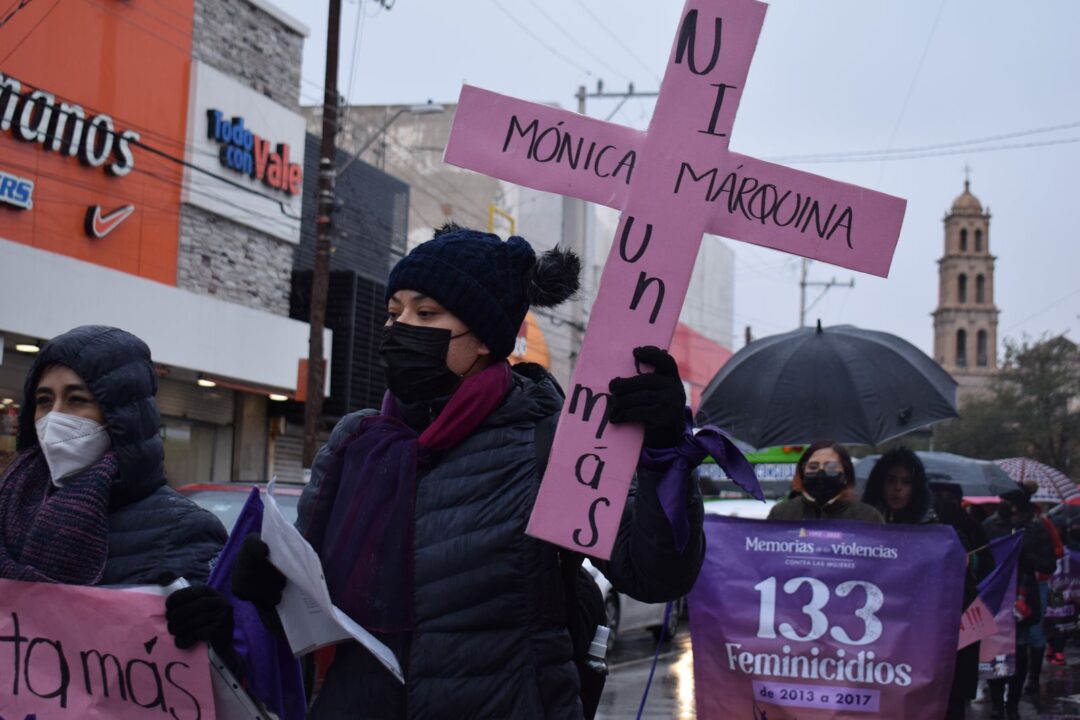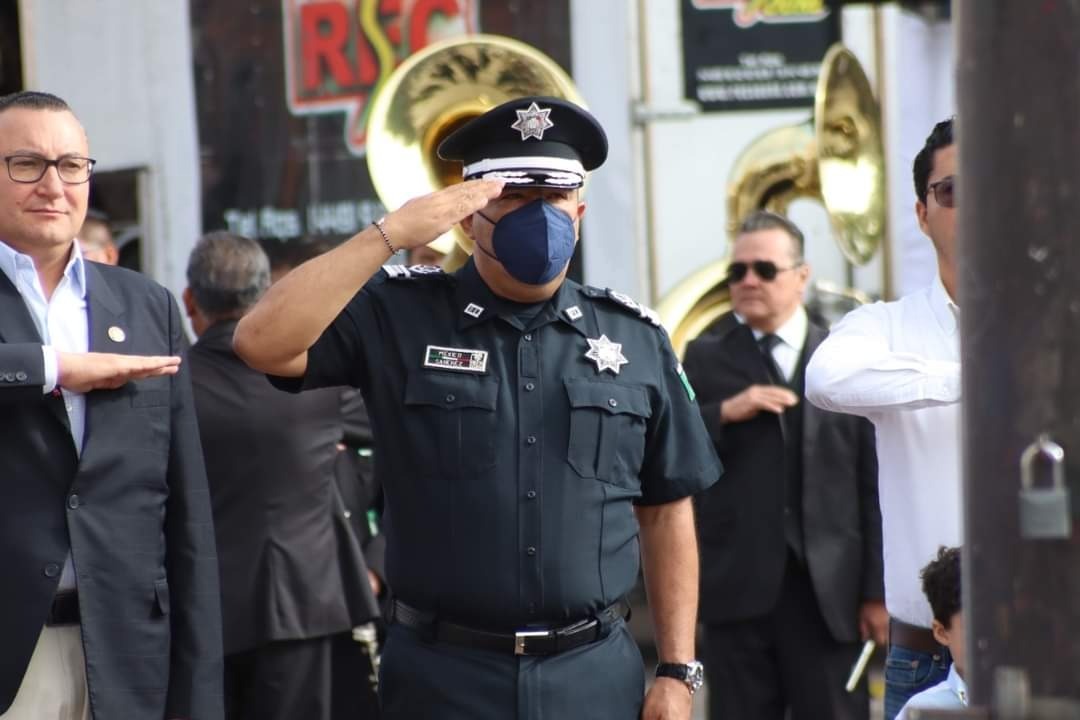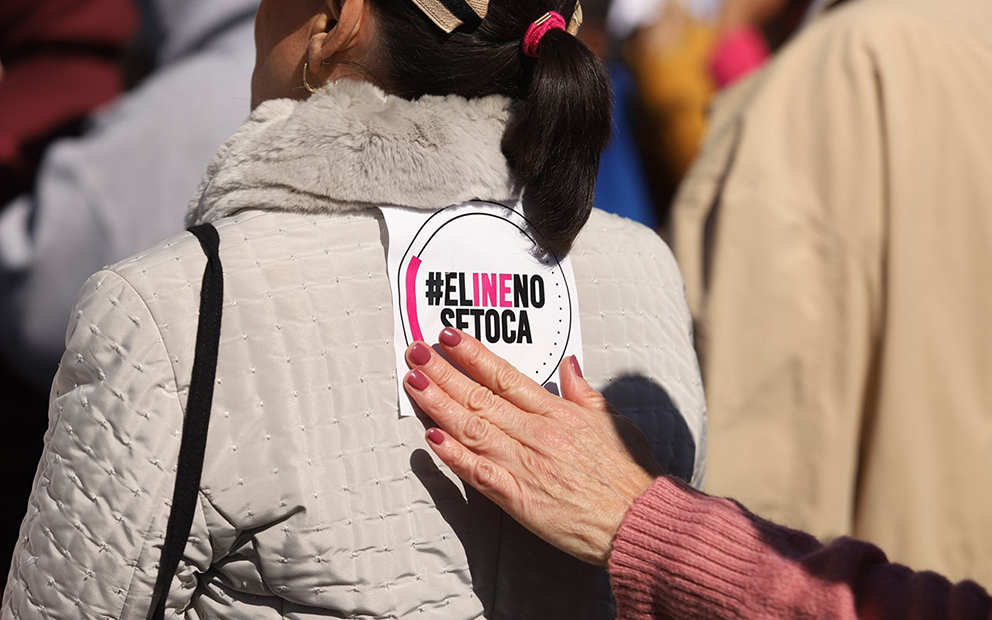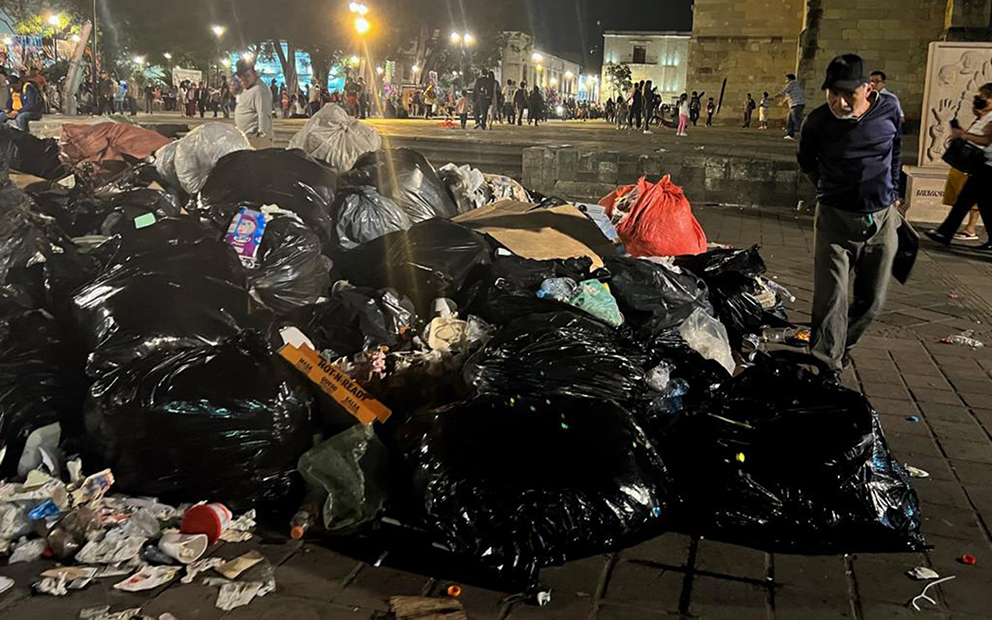Vaccines have arrived to La Montaña de Guerrero, but there’s still no painkillers
19 marzo, 2021
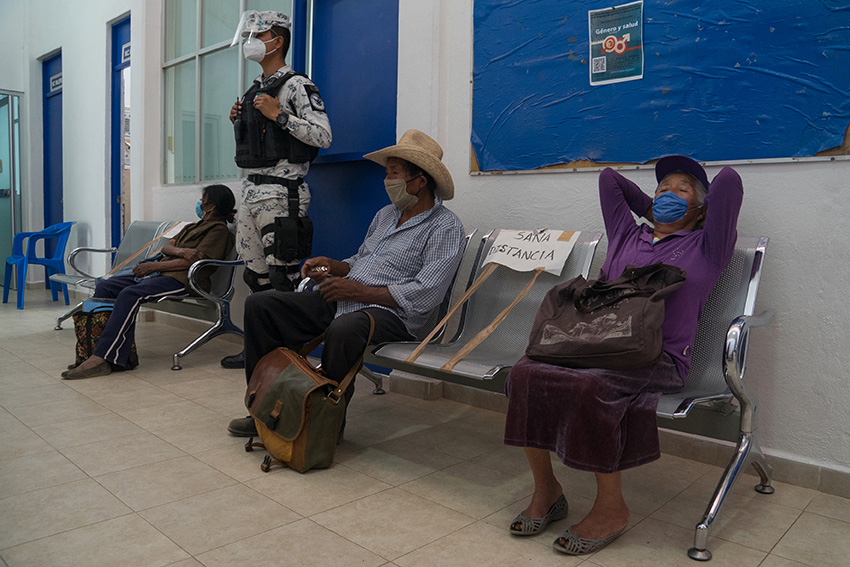
In a region where scarcity is the norm, the vaccines that people around the world are waiting for have arrived. It’s a sign of life for many people, and a sign that for once, they are being treated like other Mexicans. Yet racism and a history of neglect have a price: the lack of infrastructure has meant that many Indigenous people haven’t gotten vaccines
By Daniela Pastrana and José Ignacio de Alba, originally published February 28, 2021
Photos: Isabel Briseño
Translation: Maya Averbuch
MALINALTEPEC, GUERRERO – In an Indigenous municipality that is among the poorest in the country, the most accurate tally of Covid-19 deaths is not measured by the local health clinic, but by the black bows hanging on people’s doors.
There’s almost no street without them. Mayor Abel Bruno Arriaga does a quick count: 30 people in the area have died of the coronavirus. It’s not a particularly alarming statistic, compared with the 27,000 dead in Mexico City. But considering that Mali—as people call it—has 25,000 inhabitants and the sprawling metropolitan area has 20 million, the rate is similar. “If you look at the proportion, it’s just as bad there as it is here,” the mayor said.
A health worker, a teacher, and a government official repeated the claim: there are far more Covid-19 deaths here than on record at the hospital or the civil registry. Residents do not report their dead. If someone dies at home, family members insist the cause was something other than the coronavirus. In La Montaña de Guerrero, the name for this region of the state, deaths were already expected.
“People die here of a cough, or a fever. Children die of diarrhea. Covid is not as big of a concern for these communities as it is in the cities. If you say somebody died of Covid, people don’t believe you. They’ll tell you he died because people here die easily,” said Abel Barrera, the director of the best known human rights organization in the region, which has few such organizations.
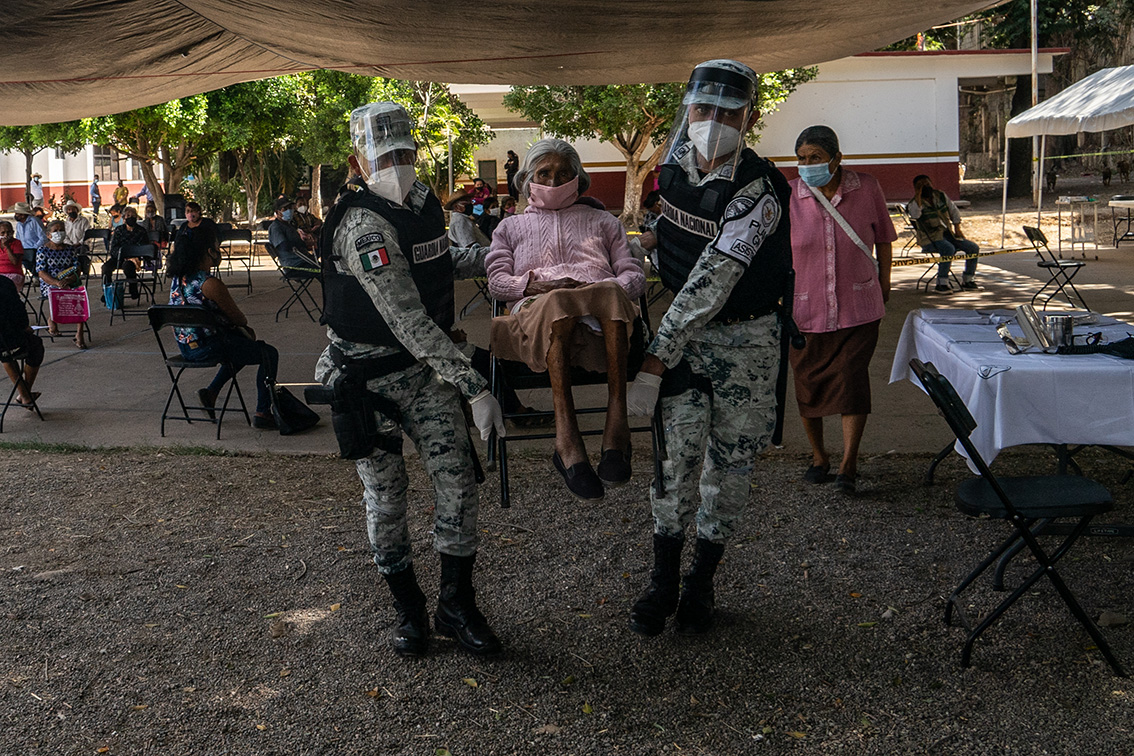
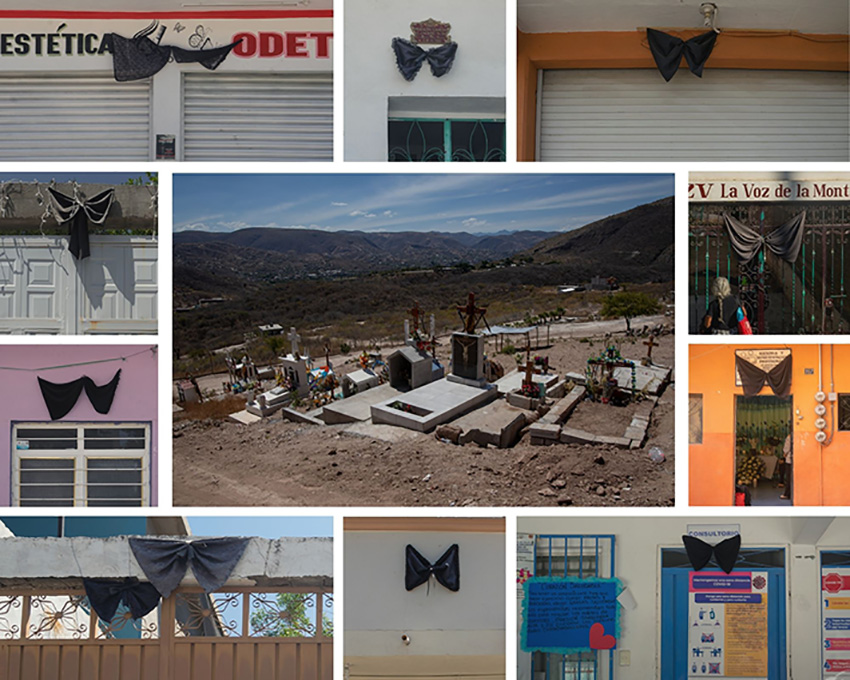
Tlachi—as people call the Center for Human Rights of La Montaña, which Barrera founded three decades ago—stayed open throughout the pandemic. Several of the lawyers got sick and in January, some of their family members got Covid-19. We met with Barrera only two days after he received the AstraZeneca vaccine, which is what was offered in La Montaña.
“We don’t have hospitals, we don’t have doctors, we don’t even have pain medication. But we have the vaccine and that gives us hope we’ll make it through and we’ll be on the same footing as anyone in Mexico City,” said Barrera, who was unable to hide his excitement.
His optimism was not shared by Gaudencio Mejía Morales, the director of the Indigenous radio station “The Voice of The Mountain,” who died in August after falling ill with Covid-19. Nor was it shared by Caritino Cantú, a professor who six months ago served as an interpreter for human rights workers conducting a study of child malnutrition levels in Pozoloapa. He died a few weeks later, along with several of his family members.
La Montaña de Guerrero is more populated than other impoverished parts of Mexico: it has 300,000 people in 19 municipalities, most of them from Indigenous Nahua, Me’phaa, Na Savi and Ñomndaá communities. Since Mexico started publishing poverty indicators, La Montaña has topped the lists for maternal deaths, school drop-outs, and child malnutrition.
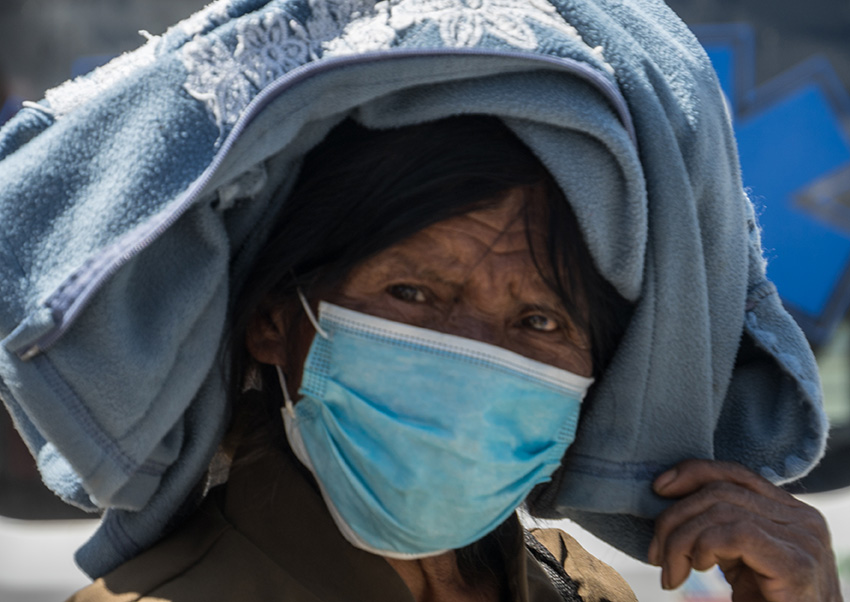
Tlapa de Comonfort is the economic hub of La Montaña. The roads out of it lead to the Costa Chica, Mexico City, Michoacán (via the area called Tierra Caliente) and Puebla.
Tlapa also marks the gateway to the upper part of La Montaña, where much of the population is Indigenous and low-income. It includes two municipalities, Metlatonoc and Cochoapa El Grande, that every year elbow each other out from the top slot in poverty-indicator rankings. They were not among the 333 municipalities that received the AstraZeneca vaccine, even though three far more developed municipalities known collectively as La Cañada, in the lower part of La Montaña, did.
Julio Lázaro, the local coordinator of social welfare programs, explained that the municipalities were selected based on several criteria: distance (because of the logistics of transporting vaccines that had to be frozen or refrigerated), the size of the population (the government wants to vaccinate the entire population in each municipality), and the official number of Covid-19 cases.
“The municipalities of La Cañada had more cases than any others in the state. That’s where all of this started, mainly because of migrants,” Lázaro said.
The beginning
The winding roads through the steep upper part of La Montaña transform into straight and well-maintained ones as you get to La Cañada. The mamey and other fruit plantations in the lower part make it seem like the countryside of Guerrero is thriving.
In the upper part of the region, you find adobe houses with dirt floors and metal roofs, and the buildings infamously built by the Ministry of Agricultural and Land Development during the tenure of Rosario Robles. They were intended for people who lost their homes during hurricanes Ingrid and Manuel, but they are empty and uninhabitable. In the lower part, in comparison, there are two- and three-story homes made of concrete—people here call it “material”—with the money sent by migrants.
The change is directly related to the dynamics of the region. Migrants from the upper part generally go to work in farms in the states of Baja California, Sonora, and Sinaloa. Those from the lower part, which extends from Tlapa to La Cañada, have gone to the United States for decades. That’s the reason Tlapa is nicknamed Tlapayork. On any Sunday, if you see lines of people waiting to receive wire-transfers at the department store Elektra, you will understand that migration is key to making ends meet.
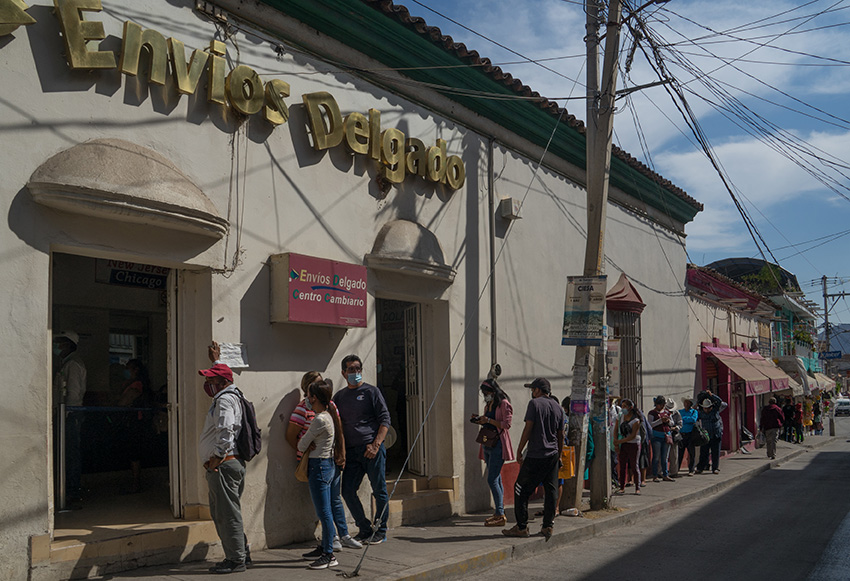
Guerrero State receives the sixth most remittances in Mexico, after Jalisco, Michoacán, Guanajuato, Mexico State, and Mexico City, all of which have far larger populations.
In 2020, during the pandemic, Guerrero received $1,940 million USD in remittances, primarily from Guerrerenses in the U.S. looking to aid their family members. In Mexican pesos, that nears $40 billion, equivalent to about 63 percent of the annual budget approved by the state’s congress. According to the World Bank, in the last trimester of 2020, Guerrero received more remittances than it had in 17 years, when the record-keeping started. During the pandemic, remittances to the state increased 9.5 percent in comparison to the year prior.
The distribution of remittances by municipality gives a clear sense of the importance of migration: of the 81 municipalities in the state, Tlapa receives the second-highest remittances, which amounted to almost three billion pesos in 2020. It is second in the state only to Acapulco, which has 10 times the population.
But migrants have had to pay a high price. During the first wave of Covid-19 in New York, Mexico’s foreign affairs office reported the deaths of at least 594 migrants. In July, 250 of them were sent back to Mexico in urns, but only before and after they received tributes in each country, where they were called heroes for having continued to work.
People assume that if there is a miscount of people who have died in Guerrero, it must be worse for migrants in the United States. What doesn’t change between the upper part of La Montaña and La Cañada is the number of black ribbons outside people’s homes.

In Huamuxtitlán, which had the first recorded case of Covid-19 in Guerrero, people told us about the death of the son of a doctor called Bozos, who was also a doctor. “He was such a young doctor,” neighbors said. But the first case here was of a woman from Conhuaxo who went to New York in March 2020, which suggests that the pandemic started here as soon as it did in Mexico City.
If you count the black bows on the doors, it seems it’s been just as lethal. “We’ll never know for sure,” said Lenin Mosso, a photographer from the Tlachi human rights center who accompanied us on our trip.
On Saturday, Feb. 20, like in many parts of La Montaña, the number of people in Huamuxtitlán who had arrived to be vaccinated fell. “If they had come on Wednesday, we wouldn’t have been able to get to them,” said María Esther Aguilar López, the coordinator of the vaccination brigade.
A young man working at the vaccine site, who was far friendlier than the guards at the health center, agreed to be interviewed. But he made a request: that we ask questions if we had concerns.
“The media has criticized us a lot, and we’re making a huge effort, which we’re happy to do, but it’s hard when there is so much false information,” he said. “You’ll find everything here: people who are afraid, people demanding things, people yelling at you from seven in the morning to midnight. One man told us, ‘You should have organized us alphabetically, like in Mexico City.’ But there’s no public registries here. People have had to wait for a long time today because we can’t open the vaccine packaging unless there are 10 people available, in order not to waste the doses.”
The man shows us his list: on Monday, when the vaccinations started, they vaccinated 40 people; on Tuesday, 400; on Wednesday, 520; on Thursday, 300; on Friday, 140; and today, 50. In total, they have applied 1,450 of the 2,450 vaccines that arrived.
“It’s very sad. We’ve put out calls with a loudspeaker and we’ve told people, but they don’t believe in the virus and they think that the vaccine is going to kill them. It’s just ignorant. If there was a problem with the vaccine, we’d be seeing it globally,” he said.
His colleague, Baldomero Hernández, finished the thought, saying that misinformation exists because allowing people to die is more lucrative than preventing those deaths. “It’s more profitable to have people read about the fact that there are hundreds dead,” he said.
The fear
He explained: “People believe that they’re trying to sterilize them, because there’s a precedent of sterilization campaigns. They’ve given women implants, IUDs, without telling them. The fear of sterilization is real. When you arrive in an area where people have already been sterilized, and where people are never given any sort of help, people say, ‘Now you want to vaccinate me even though you’ve never given me anything before? How strange. You probably just want to sterilize me or kill me.’”
Another issue has been the vaccine rollout in these communities. In the Indigenous towns here, it’s strange to have people decide individually whether to receive the vaccine. In the rush to carry out their vaccination campaign, authorities ignored the basic principles of organization here, like waiting for the vaccines to be discussed in community assemblies.
“There’s a lack of interaction between the authorities and the communities,” Barrera said.
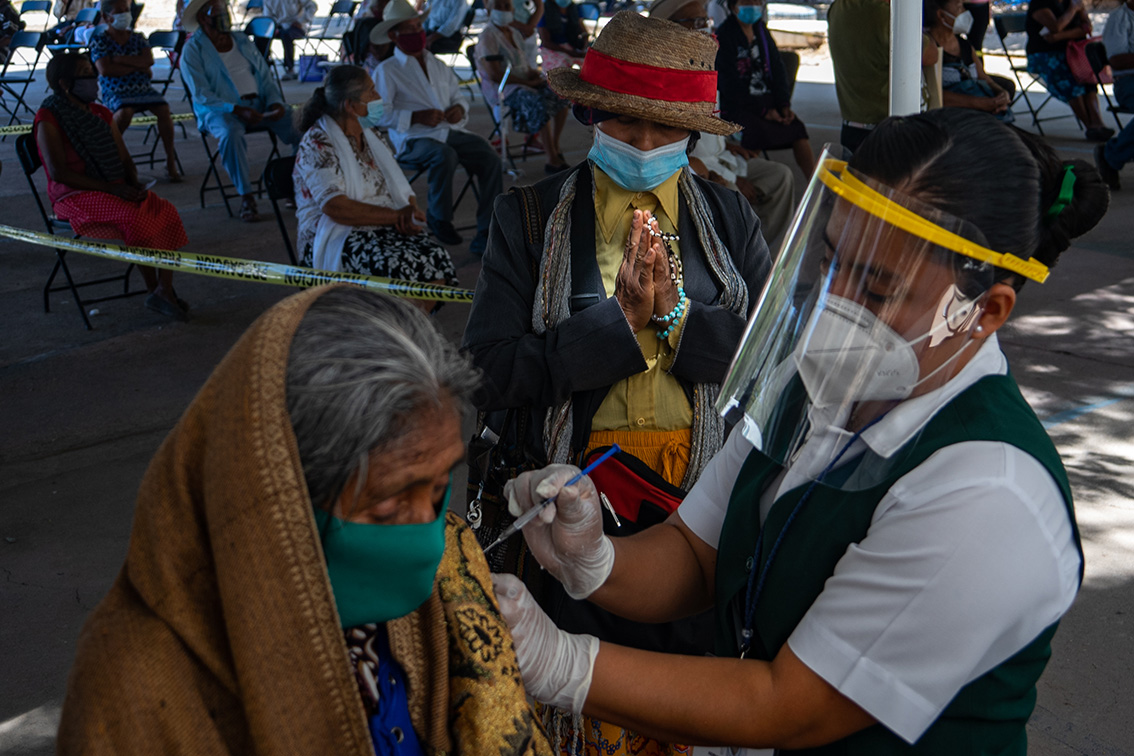
Barrera said that in the first part of the pandemic, many people stayed indoors and were strict about quarantining. But the length of the pandemic and the lack of information from Mexican authorities led to a lot of confusion, especially when the government started using a stop-light system to explain the degree of contagion in different states.
Other conditions here made the situation worse. Malinaltepec, for example, closed to outsiders for a few months. But then, Arriaga said, “the people forced us to open because there was no soda or beer left.”
The mayor said that he tried to convince the leaders of communal lands to prohibit entry and to put their promises in writing. “Friends, we’re all against this illness and we can’t just worry about ourselves,” he told them. But nothing could withstand the public pressure to allow the Coca-Cola truck to pass. “We had to open the road, because people threatened to take over the municipal office.”
Malinaltepec is one of the ten poorest municipalities in Guerrero. According to the mayor, coronavirus is not the gravest health problem facing people in the area.
“Covid-19 and diabetes have had the biggest impact in the region,” Arriaga said. “All of my uncles died of diabetes, and they weren’t even that old—50, or 60—and my dad died of a heart attack. He had diabetes, too. I have diabetes.”
The director of the health center, Leonardo Miranda Quintero, agreed. “People are more and more sedentary and they have bad diets. We have a lot of cases of hypertension and diabetes,” he said.
He added that people’s health conditions have to be considered alongside other factors that have limited sanitation measures, including misinformation during the pandemic. “What you see on social media, like some guys in Ecatepec saying that they were being killed, are things that people see here totally out of context. It makes people panic,” he said.
Another issue is the lack of public health infrastructure. In the health center of Malinaltepec, for example, there are only three doctors. Their pharmacy lacks basic supplies, such as pain-relievers and antibiotics, but it has a steady stock of oxytocin and other medicines that are rarely used but that are sent from some central office.

The pandemic has been unforgiving in the towns of La Montaña. In the days before Lent, people celebrate their patron saints. Many believe that the virus came here because they had not prayed enough, Barrera said. There are towns that go into debt for the celebrations, which are even more grand when the main organizers have recently died of an illness.
In La Montaña, beliefs about sickness and health appear to come not mainly from Western science, but rather from community traditions, which are based on well-planned ceremonies and a reverence for nature.
Evarista Altamirano Galindo, a farmer from the Na Savi community (also known as the Mixtecos) said that she is 58 years old, though her official ID indicates that she was born in June 1952. She came to get the vaccine, but she was not sure it would have any effect.
“I wasn’t going to go, but my friends convinced me,” she said, without specifying.
She said that was surprised when she spoke to a doctor a few years ago. “You’re telling me that doctors also get sick?” she said to him. He replied that they did. She still doesn’t believe him, and that’s why she mentioned it.
Evarista believes that she had already gotten what she calls “the corona.” At harvest time, she felt much more tired and heard a gurgling in her lungs. “I cured myself with lime-peel water. My friend did too, but with seven whole limes and their peels, and with a root that warms your body.”
She said she doesn’t see a doctor often: “I almost never come here, because the medicines they prescribe are expensive and they don’t work.”
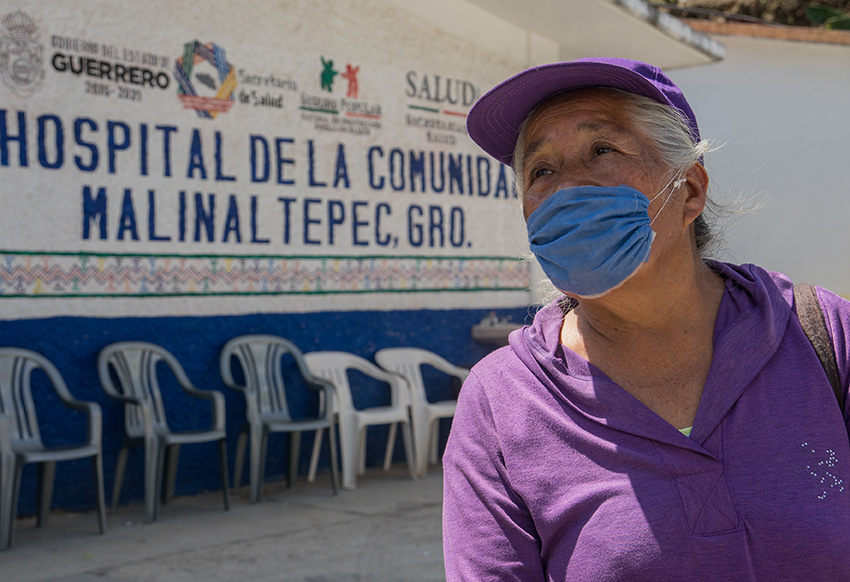
The neglect
The hospital of Tlacoapa is actually a house on loan from the communal-land authority. The nurses took over the building with ease. Instead of doors there are curtains, and the only bathroom serves as a storage area. Sometimes they have to carry patients to their check-ups, which are on the second floor. Once they had to attend a man who was particularly overweight on the floor, because nobody could lift him.
They have worked like this for eight years, and it has allowed them to get through the worst pandemic in a century. The “Covid Area” is literally the garage of the house.
“What is it that you most need in the pharmacy?” we asked naively.
“What we need is a hospital,” replied a couple of nurses without missing a beat.
The old hospital of Tlacoapa was destroyed by hurricanes Ingrid and Manuel. The new one has been under construction for eight years. It’s a vacant building without any furniture and it leaks when it rains—a symbol of the empty promises of the last three governors.
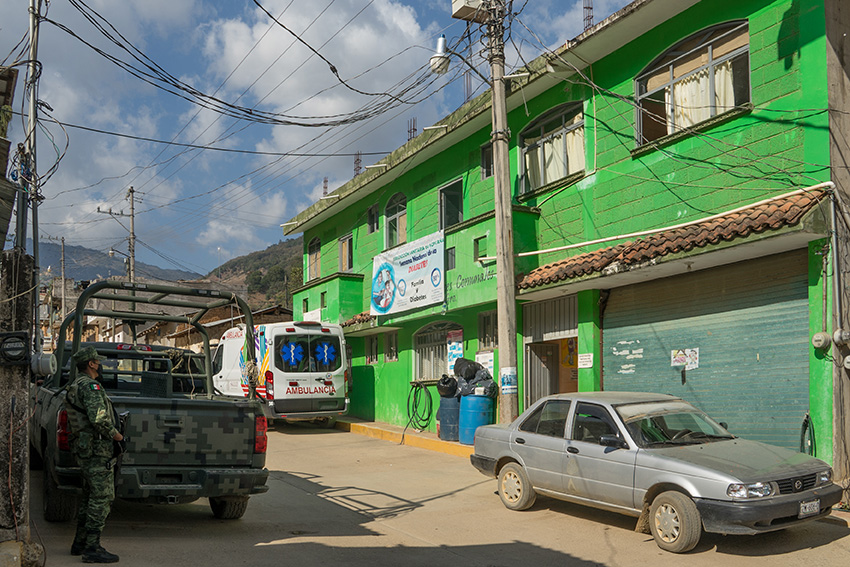
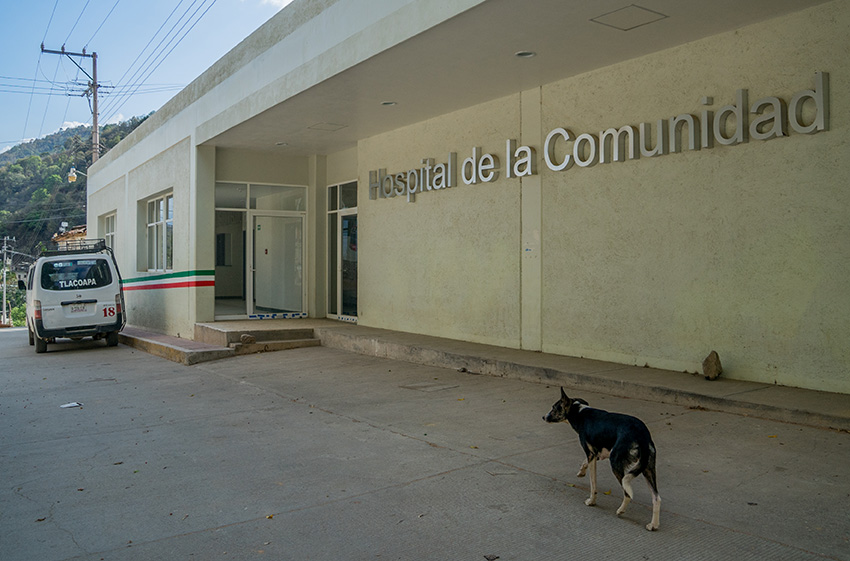
But the vaccines against the coronavirus arrived far before anyone with news about the hospital’s completion date.
“The governors have only been looking out for their own interests, and they’ve come here to rob the municipality. They’ve forgotten about their people. They still haven’t told us the hospital is ready, though Governor Héctor Astudillo has come here three times to tell us that it’s going to be ready in December. We just don’t know December of which year, or when they’re really going to finish it,” said Mayra Toribio, a government worker, who claimed children have died because of a lack of a hospital in the area.
In Tlacoapa, over 6,000 of the 10,000 residents speak an indigenous language, primarily Me’phaa. Six out of every ten people live in extreme poverty, according to data from the National Evaluation Council of Social Development Policies (Coneval). It’s the only municipality in Guerrero that still does not have a paved road to its central town.
Everything is a challenge here, as is the norm in La Montaña de Guerrero.
In the house-turned-hospital, the only doctor in the municipality received us. He told us that the doctors here almost never stay. The lack of staff means that the health center can only attend to medical emergencies in the mornings from Monday to Friday.
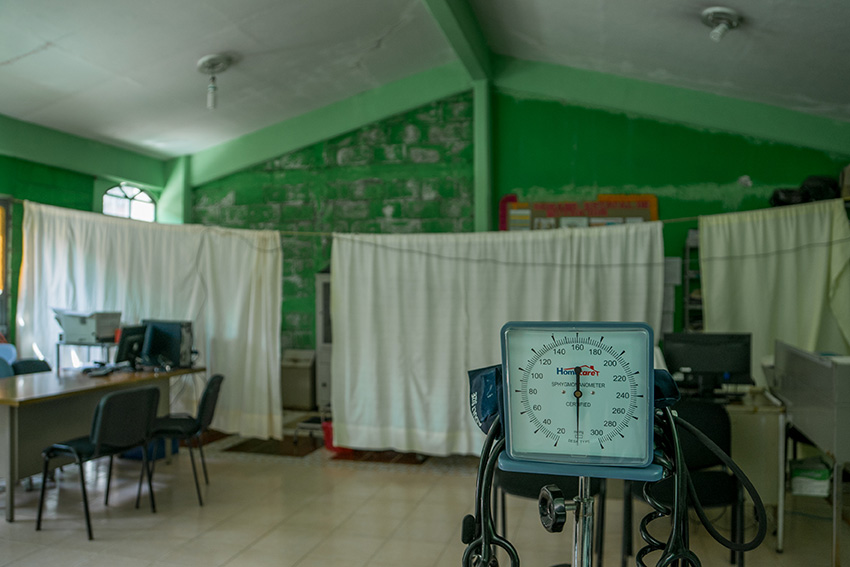
The entire municipality received 130,000 AstraZeneca vaccines, which were produced in India and arrived in Mexico in the middle of the night on Feb. 13. By midday on Friday, February 19, only 410 doses had been administered.
In Tlacoapa, there are 15 towns a two- or three- hour drive by road that has no public transportation to the main town. In order to get there, they need to pay close to 100 pesos, which is unaffordable for most people in the region.
Officials are now figuring out how to get vaccine doses to communities such as Metlapalapa or Totoixtlahuaca, where people are still waiting for their vaccines. Nonetheless, there are logistical problems related to transportation. For now, the vaccines are stored in a giant refrigerator in one room of the house-turned-hospital.
“We lose power often, and since these vaccines need to remain between 2 and 8 degrees Celsius, we have to have shifts covering 24 hours, in order to keep them on ice,” said one of the nurses while showing us the large freezer where they guard the ice.
Next to the fridge, the log for the day proves she’s right: the power went out three times just this Saturday.
***
The vaccination process in La Montaña is slow. Over 17,000 vaccines arrived, but after five days only 60 percent of them had been administered. Then many people stopped lining up to be vaccinated. On a Saturday afternoon, on Feb. 20, authorities decided to add three new municipalities to the list of those where vaccines would be made available.
“There are circumstances in La Montaña that prevent the vaccination process from being quick. We have communities that are far away, and people who want to be vaccinated but who need transportation assistance,” said the mayor of Malinaltepec.
There are also conflicts that set things back: the residents of Alacatlatzala do not want to come to the municipal seat because of an old agrarian conflict between residents. The mayor has ended up in the middle of the conflict.
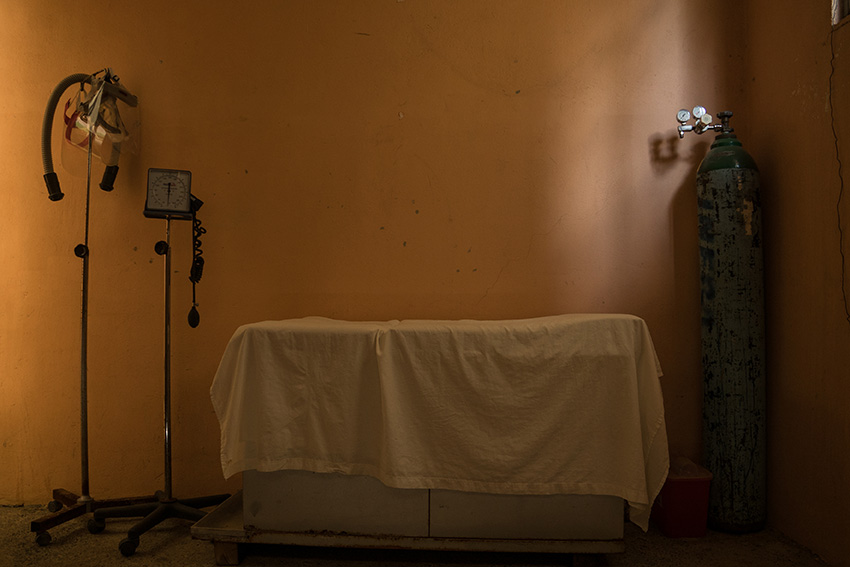
There’s still a paradox: how can everyone in the world be fighting over the vaccines, clamoring over those who have not given a second thought to jumping the line, or paying thousands of pesos for fake vaccines, while here—where it’s usually hard to get supplies—there are tons of them, and people don’t want them?
“We’re missing too many things here in order to act like we’re privileged for getting the vaccine,” said Germán Galeana, the coordinator of the office of social programs in Tlacoapa, as he listed what would be needed to vaccinate everyone.
In the main town, there’s no internet or phone signal. The closest bank is two hours away by car, and the electricity bills sometimes come out to as much as 11,000 pesos, even though people lose power all the time. But in the refrigerator of the house-hospital there are 500 vaccines waiting for the moment when poorest residents, who have never been offered anything else, believes nobody is trying to murder them.
Daniela Pastrana wanted to be an explorer and see the world, but instead she became a journalist and decided to try and understand human societies. For six years she ran the Red de Periodistas de a Pie. She founded Pie de Página, a digital outlet that seeks to change the narrative of terror that is installed in the Mexican media. She always has more questions than answers.
José Ignacio de Alba was educated in Catholic schools until he became an atheist. He is a shy wanderer, and never finished his journalism degree. He tends to have more faith the old narratives than the new, and he likes to write stories.
Isabel Briceño has never liked the fact that happy stories come to an end, which is why she captures them on camera, she captures sad stories in a search for answers.
Ayúdanos a sostener un periodismo ético y responsable, que sirva para construir mejores sociedades. Patrocina una historia y forma parte de nuestra comunidad.
Dona

